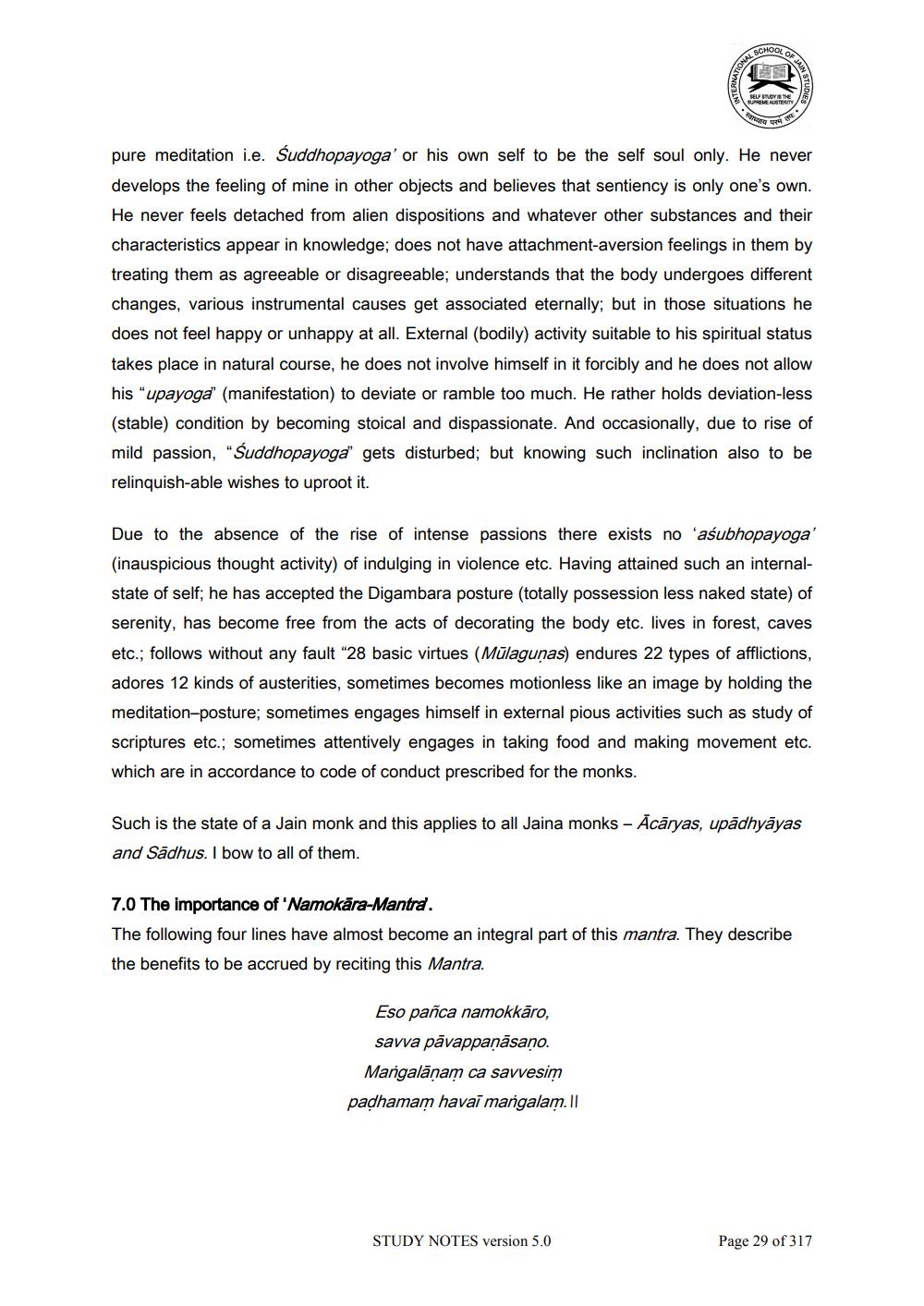________________
pure meditation i.e. Śuddhopayoga' or his own self to be the self soul only. He never develops the feeling of mine in other objects and believes that sentiency is only one's own. He never feels detached from alien dispositions and whatever other substances and their characteristics appear in knowledge; does not have attachment-aversion feelings in them by treating them as agreeable or disagreeable; understands that the body undergoes different changes, various instrumental causes get associated eternally; but in those situations he does not feel happy or unhappy at all. External (bodily) activity suitable to his spiritual status takes place in natural course, he does not involve himself in it forcibly and he does not allow his "upayoga" (manifestation) to deviate or ramble too much. He rather holds deviation-less (stable) condition by becoming stoical and dispassionate. And occasionally, due to rise of mild passion, "Suddhopayoga" gets disturbed; but knowing such inclination also to be relinquish-able wishes to uproot it.
Due to the absence of the rise of intense passions there exists no 'aśubhopayoga' (inauspicious thought activity) of indulging in violence etc. Having attained such an internalstate of self; he has accepted the Digambara posture (totally possession less naked state) of serenity, has become free from the acts of decorating the body etc. lives in forest, caves etc.; follows without any fault "28 basic virtues (Mūlagunas) endures 22 types of afflictions, adores 12 kinds of austerities, sometimes becomes motionless like an image by holding the meditation-posture; sometimes engages himself in external pious activities such as study of scriptures etc.; sometimes attentively engages in taking food and making movement etc. which are in accordance to code of conduct prescribed for the monks.
Such is the state of a Jain monk and this applies to all Jaina monks - Ācāryas, upādhyāyas and Sadhus. I bow to all of them.
7.0 The importance of 'Namokara-Mantra. The following four lines have almost become an integral part of this mantra. They describe the benefits to be accrued by reciting this Mantra.
Eso pañca namokkāro, savva pāvappanāsaņo. Mangalāņam ca savvesim padhamam havai mangalam. Il
STUDY NOTES version 5.0
Page 29 of 317




